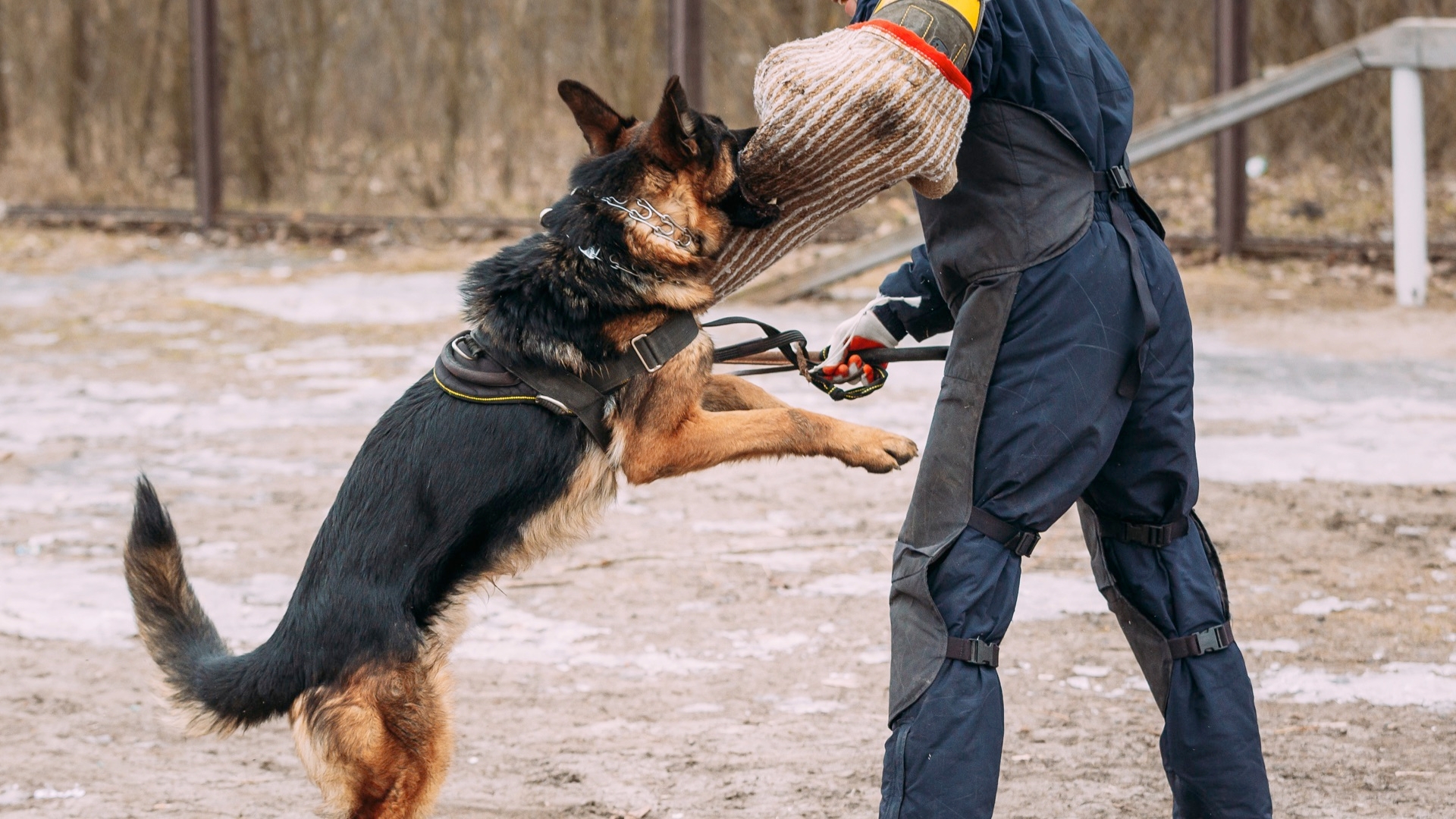CIA's Top Ten (10) Dog Training Tips:
Part One (1)
Summary:
Did you know the CIA has its own dedicated staff of dog trainers? K-9 officers are an important part of our Security Protective Service (SPS), which ensures the CIA and its employees are kept safe.


Did you know the CIA has its own dedicated staff of dog trainers?
K-9 officers are an important part of our Security Protective Service (SPS), which ensures the CIA and its employees are kept safe.
The trainers, all SPS officers themselves, work with a select group of dogs and handlers to teach them the ins-and-outs of explosives detection. Dogs have a remarkable ability to sniff out over 19,000 explosive scents, making them ideal for this job.
Dogs chosen for the Agency training course are hand selected by CIA trainers primarily from Susquehanna Service Dogs and Puppies Behind Bars, a program that pairs inmates with puppies to teach the dogs basic commands. Most of the Agency K-9s are Labradors, known for their intelligence and—most importantly—their unwavering good temperament.
The dogs go through a six-week "imprinting" class, where they learn to identify thousands of explosive scents, and are then carefully matched with a CIA SPS K-9 handler. The dog and handler undergo an additional 10 weeks of intense one-on-one training, learning to work together as a team to find explosives in things such as cars, trucks and luggage. Once they pass the final test, the teams are deployed to sites throughout the world, working as the first line of defense against explosive threats to Agency personnel and buildings.
Although our Agency dogs are trained for very specific jobs, many of the methodologies and principles our trainers use can be applied to training any dog, including your own.
Below are 10 tips from our CIA K-9 trainers that we hope you'll find useful, as well as some examples highlighting how these methods are used to teach some of the best explosives detection dogs in the world.
Make it fun
Training should be a fun and enjoyable experience for both you and your dog. Use anything fun to draw your dog in: food, dancing, toys, playing, high-pitch voices … The key is getting your dog to want to do the behavior you are asking of him/her, not trying to force your dog into a behavior.
"If the dog makes the decision to do a desired behavior on its own," says our lead K-9 trainer Dennis, "they learn more, rather than the trainer [or owner] making them do it."
Compulsion on a dog does not work.
Use what motivates your dog
When teaching your dog, use what best motivates him or her, whether it's toys, treats, jumping up and down, or using cartoon voices. The important thing is to do whatever you can to get your dog's attention and keep it.
You want to make training a positive environment so your dog will want to learn.
Our trainers use food rewards with the Labs because they are extremely food motivated. They are kept on a strict kibble diet, which they receive throughout the day while in training.
A high-pitched, happy voice also works wonders to get their attention and keep them motivated. Other dogs — like the shepherds the Agency used to train — were very toy rather than food motivated.
Find out what works for your dog.
A small change is a big movement
When teaching your dog a new behavior, command, or trick, watch for slight changes in behavior. Those small changes can be the first sign your dog is beginning to understand what you are trying to teach him.
The signals can be as small as your dog's ears becoming alert when they are usually relaxed or maybe a glance and forward lean toward the object you want your dog to fetch.
If you learn to pick up on those slight changes in behavior, you can time your praise and corrections more accurately to encourage the desired behavior.
When our K-9 unit begins a new class of dogs, one of the first things the pups learn is to sniff on command.
The instructors watch for signs as they encourage the dogs to "seek."
At first, the dogs are taught to sniff a scent placed in a small tin at the bottom of a gallon can. As the dogs begin to figure out what "seek" means, they are taught or "imprinted" with the scents they need to pay attention to.
When learning to differentiate the scents, the dogs will show small behavior changes during training — like tail wagging, drooling, or pulling toward the can containing the explosive scent — which can all indicate they are starting to catch on.
The signs are different for different dogs, which is why changes, even small ones, in normal behavior are important to look for.
Work hard, play hard
Training should be fun, challenging, and rewarding — for both you and your dog. The energy and enthusiasm you put into the training session will affect your dog.
As our lead K-9 trainer Dennis says, "What you're feeling runs straight down the leash to the dog."
Having a bad day? Leave it at the door when you enter the training room.
And, while it's important to stay focused and energetic while training, unstructured play and relaxation is just as necessary. Dogs, like people, need time to unwind.
Watch for patterns
As with any person who learns the ins-and-outs of their job, dogs can get lazy and fall into patterns. An important aspect of any training routine is to watch for those patterns and disrupt them.
If you always tell your dog to sit before her evening meal, try getting her to lay down instead, or sit randomly while on her daily walk. If you have trained your dog to "find" his toy, try hiding it up high or in a completely unexpected place.
You want to keep your dog challenged and motivated to think through tasks. This is critical for service animals like our explosives detection dogs (and their handlers) who have to switch up routines and keep their training fresh to avoid falling into predictable thinking and behavior.
Sometimes, dogs can actually outsmart their owners by picking up on patterns. One black Lab in the K-9 unit has used her keen observation skills to outsmart the trainers.
When imprinting the dogs to recognize a new explosive scent, the trainers place several cans in a large circle, some with the scent of an explosive and others with distractor scents. Trainers will often dent the side of the cans containing the explosive's scent so they will visually know which cans the dogs should indicate on.
This Lab, however, caught on to what the trainers were doing and began to indicate on the correct cans based on sight not smell.
The trainers started marking the cans with chalk instead to change the pattern. Undeterred, the Lab soon noticed the chalk marks and began looking for those cans.


